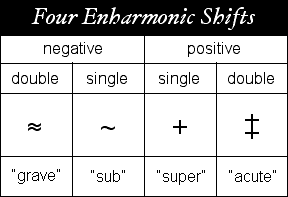
Common sense (and Occam's Razor) suggests that simple labels will usually be preferable to more complicated labels. Historical precedent explains current preferences for some pitch labels over others. While double accidentals are necessary, they are not always desirable, as when a diminished fourth is used to sound a major third, for example. Triple accidentals are highly undesirable as they seem to have only arcane connections with conventional music theory. To remedy this situation, four symbols called shifts are introduced. Shifts roughly correspond to raising and lowering pitches by commas, a practice often used by string players, known as comma shifting. This type of shifting allows an interval to change slightly in size while maintaining its original spelling. Shifts allow double and triple accidentals to become shifted naturals, sharps and flats. The result is an extended enharmonicism which allows the labels and patterns of conventional music theory to venture into the microtonal realm.

Each of these symbols indicates that a note is shifted up or down in position and pitch.
Grave  and sub
and sub  shifts are negative, meaning that they shift notes to lower positions, while
super
shifts are negative, meaning that they shift notes to lower positions, while
super  and acute
and acute  are positive, meaning that they shift notes to higher positions. Sub
are positive, meaning that they shift notes to higher positions. Sub
 and super
and super  shifts are
single shifts, meaning that they shift notes by one staff position, while
grave
shifts are
single shifts, meaning that they shift notes by one staff position, while
grave  and acute
and acute  are double shifts, meaning that they shift notes by two staff positions.
The shift symbol appears to the left of the position label, which consists of a letter and an
accidental. Both spoken and written forms follow the same order from left to right, as shown
in the example below.
are double shifts, meaning that they shift notes by two staff positions.
The shift symbol appears to the left of the position label, which consists of a letter and an
accidental. Both spoken and written forms follow the same order from left to right, as shown
in the example below.

Use of shifts adds four additional positions to each unshifted position. Five labels result, as shown in the following example for G.
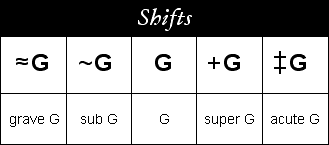
Consecutive shifts differ by ± 29.3 cent intervals, as shown in the table below.
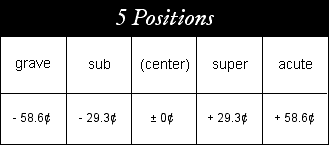
Shift symbols are not shown in the table above, because positions which are shifted do not in fact include shift symbols written on the staff. Instead, shifts correspond to successively higher or lower positions above or below a given unshifted position. Therefore, before shifted positions are learned, unshifted positions should be mastered, beginning with naturals followed by accidentals. Shifted positions surround a given unshifted position in increments of a single staff position, as shown in the example below which illustrates single shifts of G.
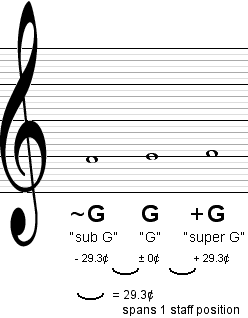
Positive and negative shifts of D are given below.
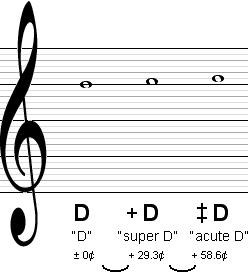
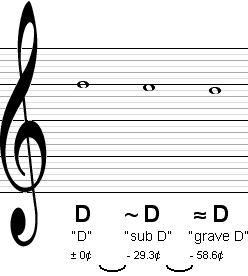
All shifts of G in ascending order are shown below.
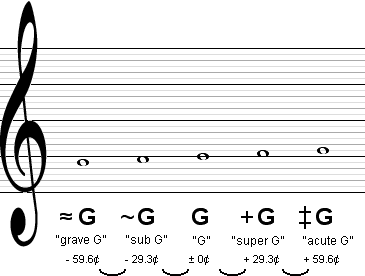
Each unshifted position may be seen as the center of a five position region, as the following pattern illustrates.

Once unshifted natural and accidental staff positions have been learned, shifted positions are easily learned by following this consistent pattern from each unshifted position. The pattern for a natural and its resultant accidentals is combined with shift patterns below.
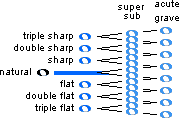
The figure above shows how double shifts result in overlapping enharmonic positions, which are further illustrated below in the sections on sharps and flats.
Below, shifted positions are shown for natural notes on the treble staff.
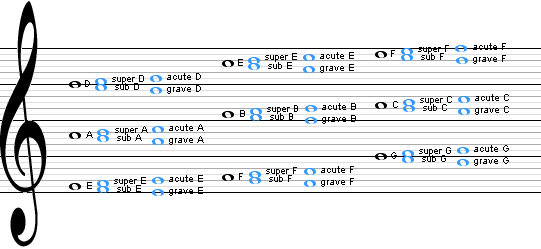
Note that shifts for naturals which are a halfstep apart, E and F, and B and C, result in overlapping shifted positions, as shown below.
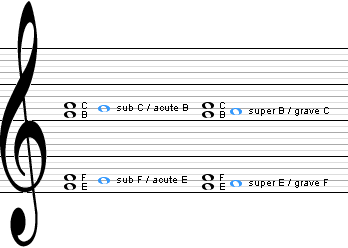
Overlapping shifts such as these allow for flexibility of interval spellings. All shifted positions of B and C are shown below on a bass clef staff.
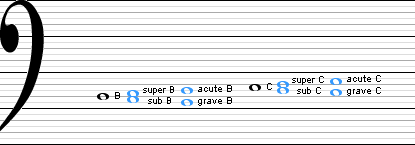
Enharmonic shifts resulting from adjacent naturals a halfstep apart gives the following stepwise sequence of eight notes.
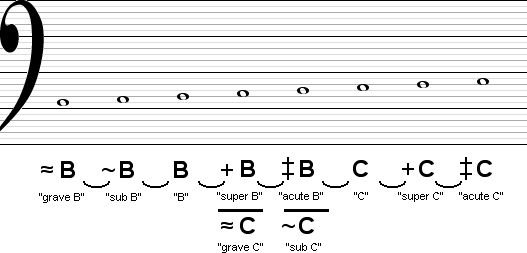
Shifted positions of sharp accidentals are shown below in treble clef.
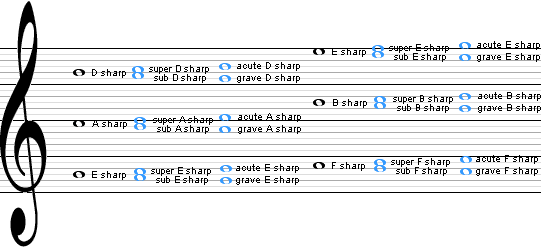
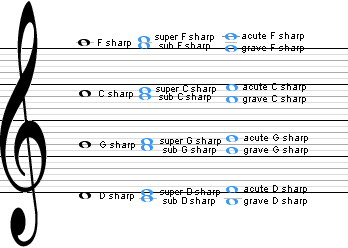
Comparing natural shifts with sharp shifts, we find that an acute natural overlaps with a grave sharp of the same letter. For example, F and F sharp are shown below on a bass clef staff.
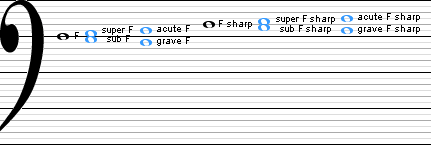
Acute F overlaps with grave F sharp. This enharmonic results in a stepwise sequence of nine notes, as shown below.
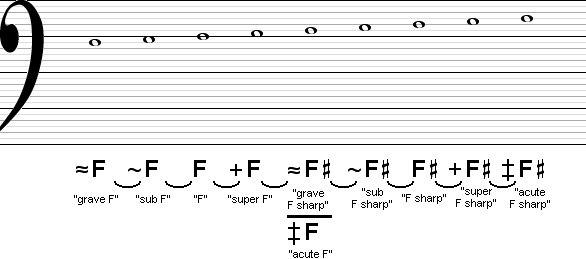
Below, shifted positions of flat accidentals are shown in treble clef.
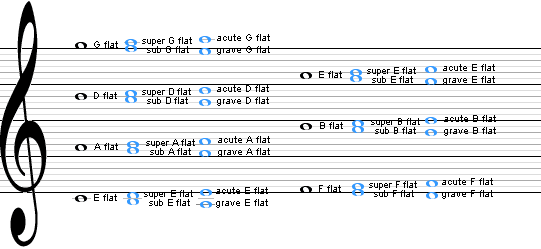
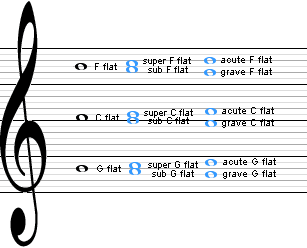
Comparing natural shifts with flat shifts, we find that a grave natural overlaps with an acute flat of the same letter. For example, E and E flat are shown below on a bass clef staff.
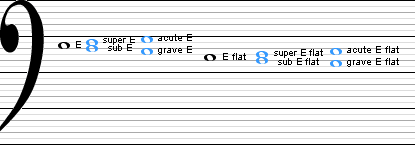
Grave E overlaps with acute E flat. This enharmonic results in a stepwise sequence of nine notes, as shown below. Referring to the example above, note that in the example below, acute E and super E are enharmonic with sub F and grave F, respectively.
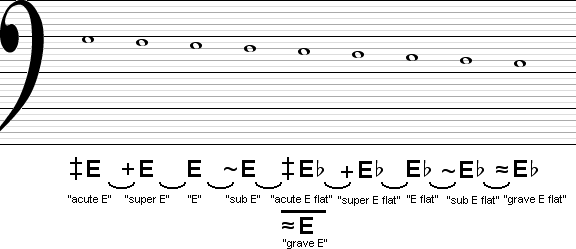
Shifts provide five enharmonic labels for every position. The following series of tables show enharmonic labels for 41 positions, with indications for preference of use. Each column of five labels applies to the note directly above it on the treble staff. With each successive table, pitches are raised by one degree, or roughly a positive comma shift.
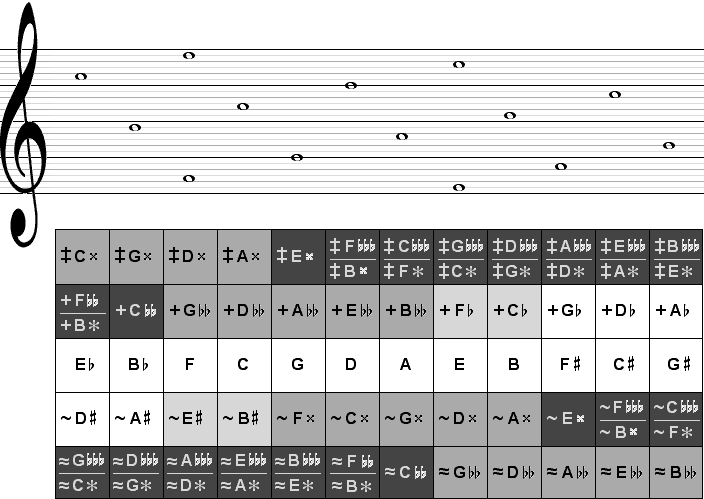

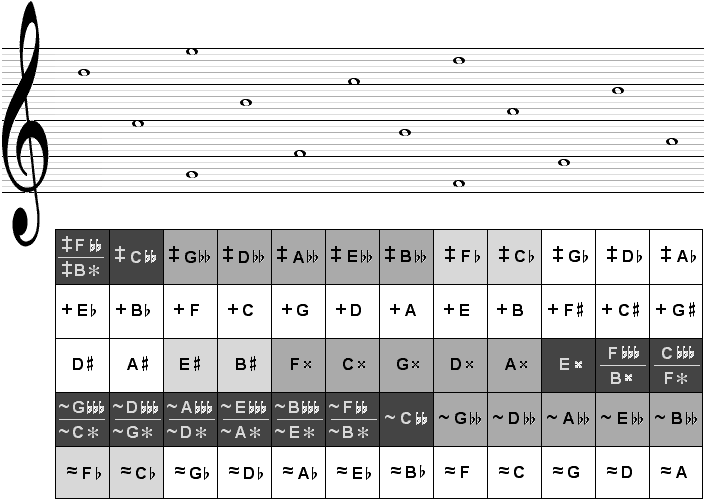

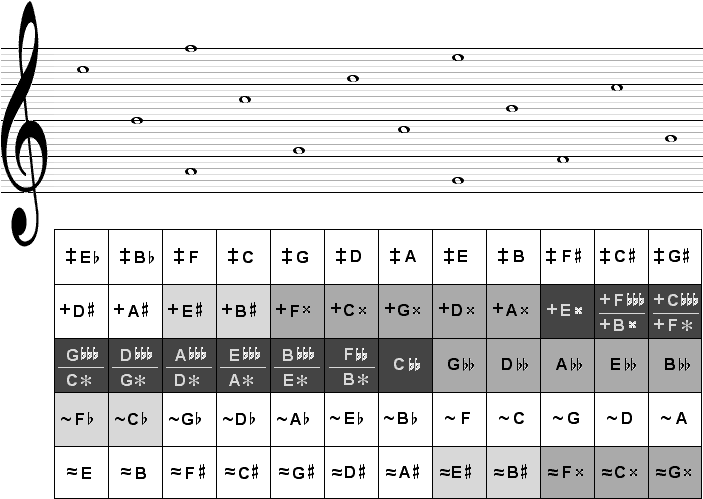

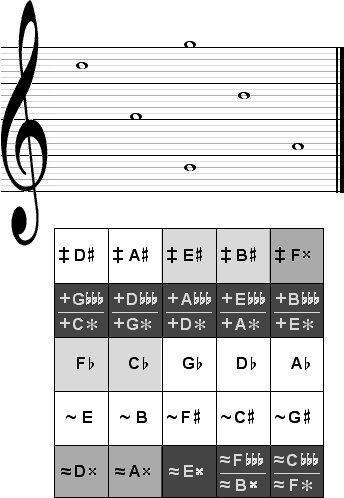

With positional labels established, a notation for finer tuning is still needed. This is easily achieved by using signs as chromatic inflections. Each position, which functions as a Comma zone, is further subdivided into five fine tuning JND subzones using inflections.
NEXT: Inflections